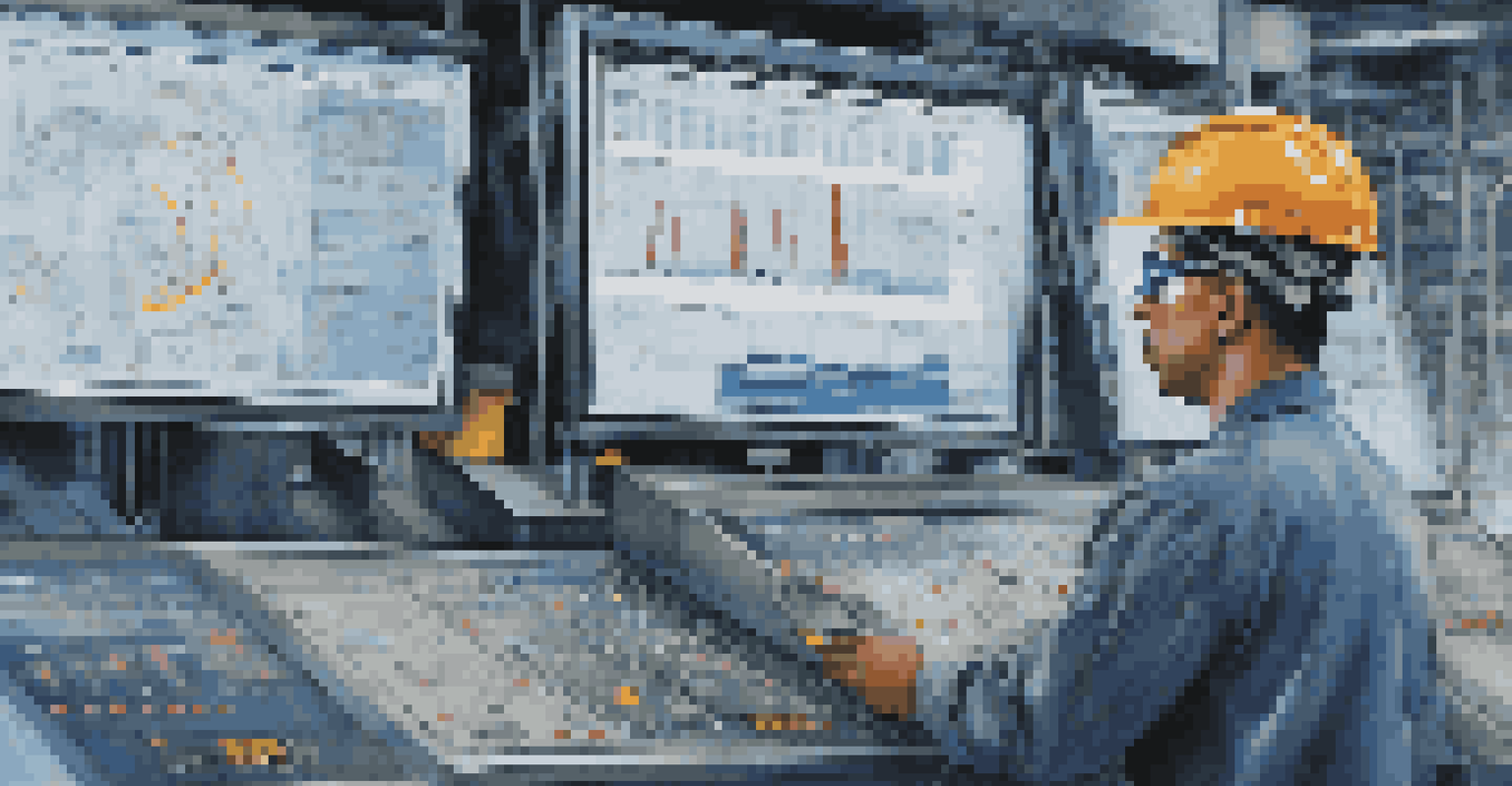Cyber-Physical Systems: Enhancing Safety in Industrial Operations

Understanding Cyber-Physical Systems in Industry
Cyber-physical systems (CPS) bridge the gap between the digital and physical worlds. They integrate computational elements with physical processes, allowing for real-time monitoring and control. Think of CPS as the nervous system of an industrial operation, where sensors and actuators communicate seamlessly to enhance efficiency and safety.
The greatest danger in times of turbulence is not the turbulence; it is to act with yesterday's logic.
In industrial settings, CPS can monitor machinery, track performance metrics, and predict failures before they occur. This proactive approach helps prevent accidents and reduces downtime, making operations smoother and safer. By leveraging data from various sources, CPS creates a comprehensive view of the operational landscape.
As industries become more digitized, the importance of CPS continues to grow. They represent a significant shift towards smarter, more reliable operations, ultimately contributing to enhanced safety measures in the workplace.
Key Components of Cyber-Physical Systems
CPS is built on several key components, including sensors, actuators, and processing units. Sensors gather data from the physical environment, such as temperature, pressure, and motion, while actuators take action based on that data. This interplay ensures that systems can respond dynamically to changing conditions.

Additionally, communication networks are vital for transmitting data between components and to centralized control systems. This connectivity allows for real-time decision-making, which is crucial for maintaining safety in fast-paced industrial environments. Imagine a factory where machines can communicate with one another to prevent collisions or malfunctions.
CPS Enhances Real-Time Safety
Cyber-physical systems enable real-time monitoring and immediate response to anomalies, significantly improving workplace safety.
Finally, advanced algorithms and artificial intelligence play a critical role in analyzing data and making predictions. These technologies empower CPS to identify potential safety hazards and suggest corrective actions before problems escalate.
Real-Time Monitoring and Safety Enhancements
One of the most significant advantages of CPS is the ability to monitor systems in real-time. This continuous oversight allows for immediate detection of anomalies, such as equipment malfunctions or unsafe conditions. For instance, if a machine overheats, CPS can trigger alerts and initiate cooling measures automatically.
The future belongs to those who believe in the beauty of their dreams.
This proactive approach not only enhances safety but also ensures compliance with regulations and standards. Industries that adopt CPS often see a reduction in workplace accidents and improved overall safety records. It's like having a safety net that catches problems before they can escalate into serious incidents.
Moreover, with the integration of advanced analytics, CPS can learn from past incidents and continuously improve safety protocols. By analyzing historical data, these systems can adapt and evolve, creating a safer environment for employees.
Predictive Maintenance: A Game Changer for Safety
Predictive maintenance is a crucial aspect of cyber-physical systems, focusing on anticipating equipment failures before they happen. By analyzing data from sensors and historical performance records, CPS can identify patterns that indicate potential issues. This foresight allows companies to schedule maintenance proactively, minimizing disruptions and enhancing safety.
For example, if a conveyor belt shows signs of wear, CPS can alert maintenance teams to perform repairs during scheduled downtimes, rather than waiting for a breakdown. This not only reduces the risk of accidents but also improves operational efficiency.
Predictive Maintenance Boosts Efficiency
By anticipating equipment failures, CPS allows for proactive maintenance that reduces risks and enhances operational efficiency.
Additionally, predictive maintenance fosters a culture of safety within organizations. When employees know that equipment is regularly monitored and maintained, they can focus on their tasks without the constant worry of unexpected failures.
Integration of Human Factors in CPS Design
Designing cyber-physical systems requires careful consideration of human factors to ensure safety and usability. Operators are often the first line of defense in identifying potential hazards, so their input is invaluable during the development phase. By incorporating user feedback, CPS can be tailored to meet the specific needs and preferences of the workforce.
For instance, intuitive interfaces and clear visualizations can help operators quickly understand system statuses and respond to alerts effectively. This human-centric design minimizes the risk of human error, which is a significant contributor to accidents in industrial settings.
Moreover, training programs can be enhanced by integrating CPS insights, ensuring that employees are well-equipped to handle the technology and respond to emergencies. A well-informed workforce is a safer workforce.
Challenges in Implementing Cyber-Physical Systems
Despite the benefits, implementing cyber-physical systems in industrial operations comes with its challenges. One major hurdle is the initial cost of integrating new technologies and infrastructure. Companies must weigh the long-term safety and efficiency gains against the upfront investment required.
Additionally, cybersecurity is a significant concern. As CPS become more interconnected, they can also become vulnerable to cyberattacks that could compromise safety. Organizations must prioritize robust security measures to protect their systems and data from malicious threats.
Human Factors Are Key in CPS Design
Incorporating user feedback and intuitive design in cyber-physical systems minimizes human error and promotes safer industrial operations.
Lastly, there is often resistance to change within organizations. Employees may be hesitant to adopt new technologies or processes, fearing job displacement or increased complexity. Addressing these concerns through clear communication and training is essential for successful implementation.
The Future of Safety with Cyber-Physical Systems
The future of safety in industrial operations looks promising with the continued evolution of cyber-physical systems. As technology advances, we can expect even more sophisticated systems capable of enhancing safety in unprecedented ways. For instance, the integration of machine learning will allow CPS to become even more adept at predicting and preventing accidents.
Moreover, as industries increasingly embrace the Internet of Things (IoT), the potential for interconnected CPS will expand. This interconnectedness can lead to smarter factories where every component communicates seamlessly, further mitigating risks and enhancing safety protocols.

Ultimately, the commitment to safety through cyber-physical systems will define the future of industrial operations. As organizations recognize the importance of investing in these technologies, we can look forward to safer workplaces and improved operational efficiencies.